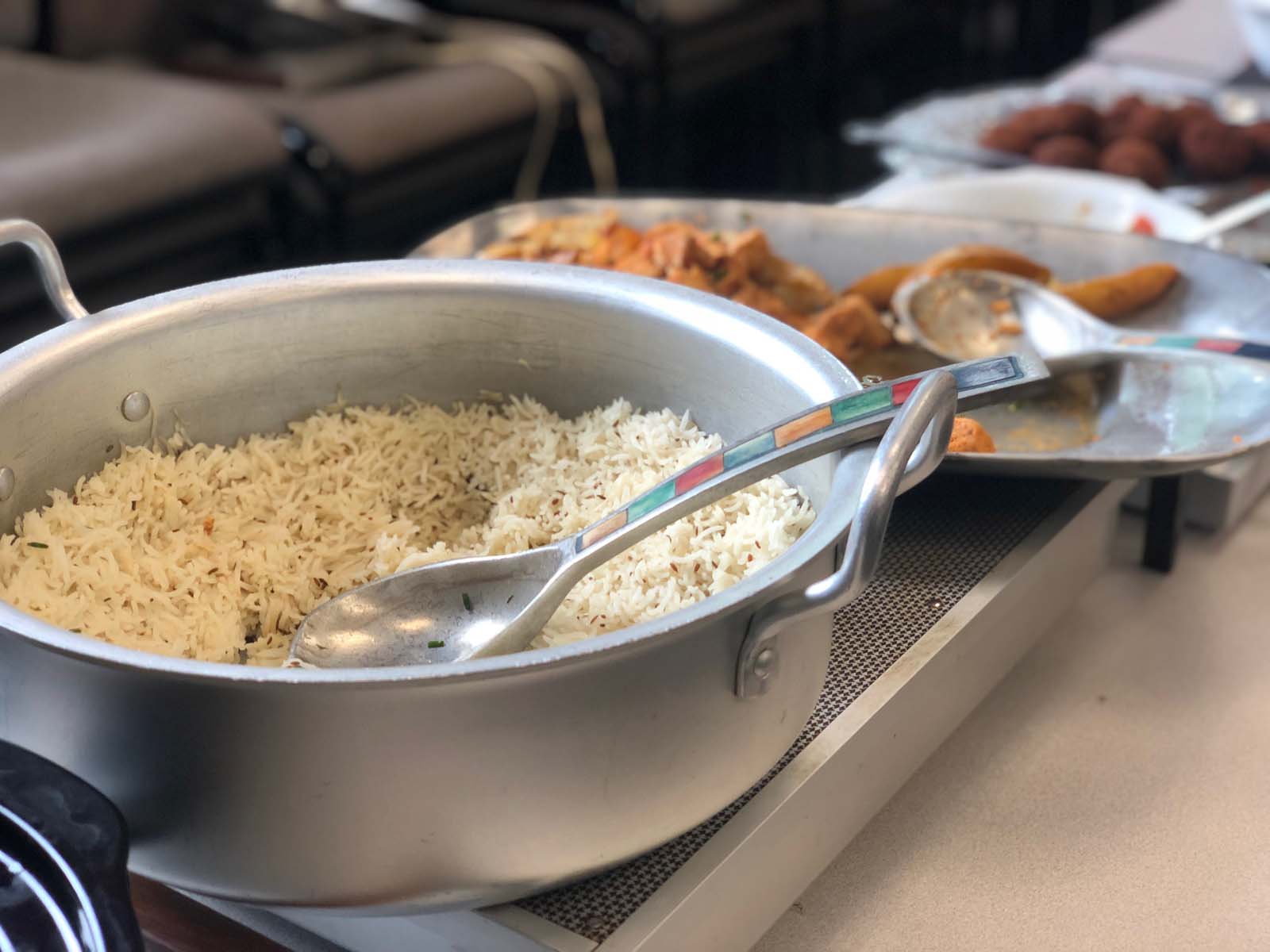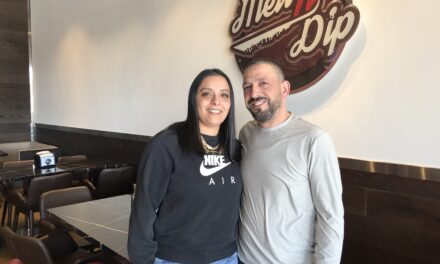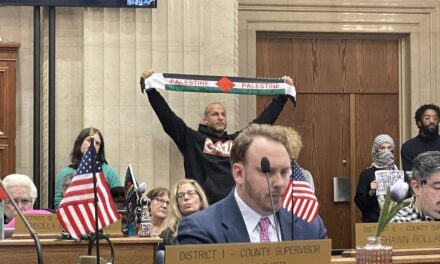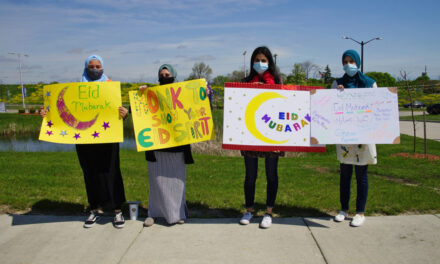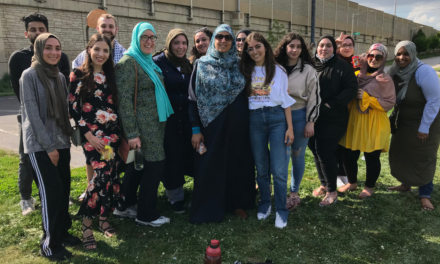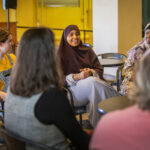© Photo
Wisconsin Muslim Journal
On Friday, July 26, the monthly MMWC networking brunch became a henna party. The Muslim women at the party had attended many henna parties at wedding receptions and baby showers, but for some of the visitors, it was their first henna experience. And as one MMWC member remarked, “I have been to many henna parties before, but this is the first time I have learned about the history of henna.”
Their teacher and henna designer was Amina Armaghan whose business is Design Henna. The 29-year-old, self-taught henna artist has been in business for three years. Married, with a four-year-old son, Aarish, who is starting school in September, Amina has picked a good time to expand her business.“This is what I do now,” she said,
For the networking brunch, Amina did henna body art on hands and arms. She uses the henna cone method and prepares the paste herself with henna imported from Pakistan. She also does henna-inspired art with acrylic paint on stones and jewelry and even small paintings which she brings to events of all kinds. She recently presented at a Christmas event in Hartland where she made henna designs on ornaments. “I sold tons of them,” she said.
The henna cones, which some of the women at the networking brunch said reminded them of the pastry bag used to make piped royal icing on cakes, provides better flexibility in creating the designs. “In Pakistan when I was little,” Amina said,“they used to [apply]henna with a toothpick.” But, “it’s better, looks more neat,” when applied with the cone.
Many people are introduced to henna at family gatherings of women. “Right before the reception” at a wedding, MMWC vice president Inshirah Farhoud said, “they have a henna party. Traditionally, they bring [the henna] in dancing, along with jewelry for the bride.” The bride gets henna designs on her hands and feet. “You only do the bride because it takes a lot of work,” says Amina.
This was not Mary Coughlin’s first henna party. She worked as a teacher in Bahrain for 19 years and was very familiar with the prevalence of henna in the Arab world. She saw henna applied by men to redden their beards like the Prophet’s. Ms. Coughlin was looking forward to getting henna done on her hand. Other participants were Cherrie Hanson, a Kirtan singer, and business-owner Debra Chappelle who received a henna design to her upper arm. Julie, a regular networking brunch attendee, said the gathering is “a chance for women to get together across cultures. Topics vary. Today’s is henna!”
“Women power,” said Saleha, who, along with Shaida Munim and Tabussum Yasmeen, cooked the delicious buffet.
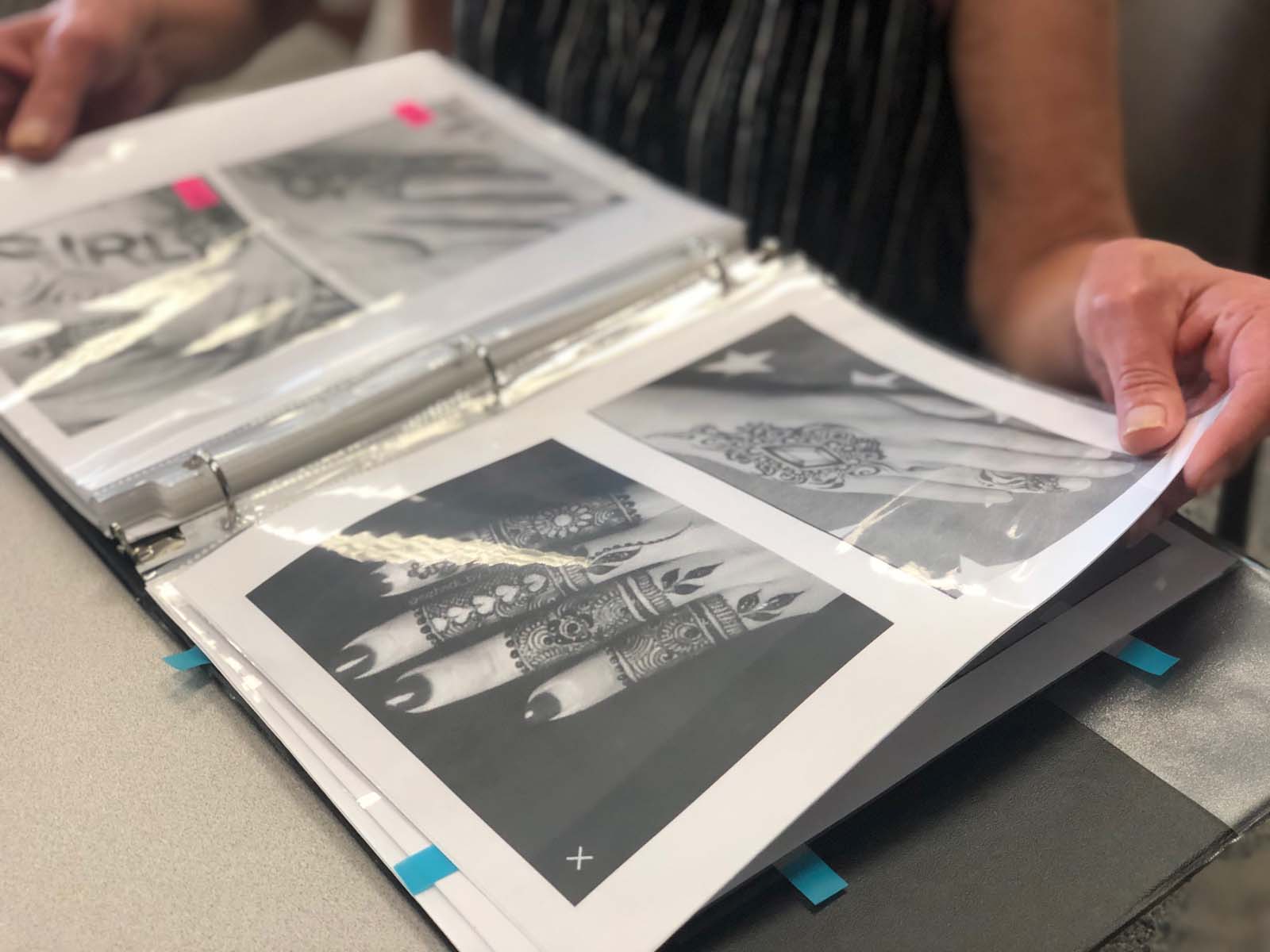
“I come for the food,” joked Mary Buczynski.
Ms. Buczynski, a member of the Friendship Club, attended the luncheon with several books from the IRC library that are under discussion at her book club, including the popular Mornings in Jenin by Susan Abulhawa. The IRC’s library is the only Islamic lending library in State of Wisconsin with over 3500 books and new titles added every week. Anyone can apply for a library card for only $5, the cost of a henna application at the networking brunch.
Also in attendance was Asfia Syed and her daughter Nabeelah Syed, 13. Nabeelah was the first one to get a henna design on her hand at the brunch. The mother and daughter are from Franklin. Ms. Syed remarked that in her family, “We always do henna, but I never learned about the history of henna.”
Introducing her PowerPoint presentation on henna culture and history, Amina said, “Henna has been done for over 5,000 years.” The henna plant, Lawsonia inermis, grows in Northern Africa, Asia and Australia. Its leaves are used to make the henna dye. Henna is believed to have originated in Egypt, where it was found on mummified bodies, but besides body art, it has multiple healing and beauty uses.
The Prophet Mohammed used it on his hands and feet for its “natural cooling effect,” Amina explained, soaking in water infused with henna leaves.Dr. Shaida Munim added that the Prophet would also apply henna “to help with wound healing.” It has “antimicrobial properties,” said Inshirah Farhoud, a pediatric nurse practitioner.
Henna is also used to improve the quality of hair and nails. “It’s a natural hair dye that gives the hair a boost and helps with hair loss, “Amina said. Her own black, hennaed hair is healthy and luxurious.
Amina’s henna paste is unique in that she combines henna and water and organic essential oils with no additional chemical additives. She sells the paste at her events.And she warned the ladies present that the “black henna” sold at many Indian and Arabic grocery stores is made with PPD, an ingredient in hair dye that makes the pigment darker and longer lasting, but which has been known to irritate the skin.
According to Amina, jagua gel, which comes from an edible fruit found in Central and South America, when added to henna can produce a dark brown to black color more naturally than henna enhanced with PPD.
Amina uses a sealant of lemon water and sugar that she dabs on a few minutes after finishing her henna-paste designs. The henna must be kept on for 24 hours to give the stain time to set. “The longer you leave it on the better it sets the color,” Amina said. She warned the ladies not to use water on their hands.The darkness and lastingness of the color left behind“also varies according to location, temperature, heat, cold,” she said.
The designs created at the networking brunch should last 2 to 3 weeks, Amina said.








